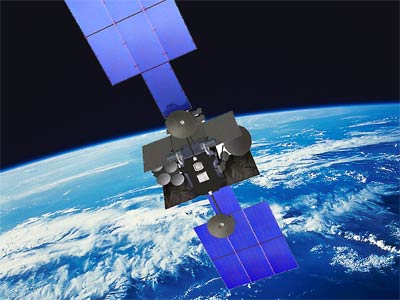Rethinking TSAT: survivability firstby Taylor Dinerman
|
| Current work on TSAT does little to solve what may be one of the most critical US military vulnerabilities of the next decade: a lack of adequate, secure, survivable space-enabled communications. |
Alas, things did not turn out to be that simple. Not only was the technology hard to assemble into a new spacecraft design, but, according to some experts and insiders, TSAT was used by the Air Force and Congress as a “billpayer” for other programs that the USAF leadership regarded as having a higher priority. Now, instead of the first satellite being launched in 2016, the new plan hopes to put it up a less capable spacecraft in 2019. This is an old problem with Air Force space budgets that has been made worse by the disarray in recent Pentagon space leadership.
The new designs may lack the optical communications links of the older ones, but they still will have a secure Internet-protocol-based router. For the time being the Air Force is spending the limited funds they have on risk reduction and preliminary design work. As long as the program stays on the back burner this is acceptable to most of the powers that be in Washington. However, it does little to solve what may be one of the most critical US military vulnerabilities of the next decade: a lack of adequate, secure, survivable space-enabled communications.
So far, ever growing increases in demand for satellite communications have been met by leasing facilities from commercial and allied sources. The recent deal to buy bandwidth from the Italian Sircal military satellite system is an example of this. Like the big budget supplementals that have characterized the way the US has paid for the post-9/11 war, these deals are a clumsy but necessary improvisation. Sadly, one has to ask why this situation will still exist in 2020 and beyond. Even if the Defense Department manages to buy all the satellite communications capability now planned, it will still not have enough to meet the future needs of the troops.
Air Force Space Command (AFSPC) has been handed a lemon; they should use the opportunity to make lemonade. US space dominance is going to be challenged within the next twenty years, if not sooner. AFSPC can begin to seriously prepare for these challenges now by developing TSAT as a survivable asset that can withstand the kinds of attacks that can be anticipated coming from the so-called “near peer” competitors.
| The US cannot afford to continue to build assets that depend on the forbearance of its foes to protect its essential space-based military forces. |
We know that a fair amount of thought has already been given to protecting US spacecraft in low Earth orbit or even in medium Earth orbit. Publicly, at least, less effort has been put into imagining how to protect satellites in geosynchronous orbit. While a direct kinetic attack from an anti-satellite weapon similar to the one the Chinese tested in January 2007 is unlikely, it cannot be ruled out. If political pressure rules out the use of active defenses, then the TSATs will have to be loaded down with lots of fuel and redundant maneuvering thrusters. At least two types of propulsion will be needed: a relatively low-power thruster for station keeping and for moving the satellite in situations where there are hours or even days warning of an impending attack, and fast-response thrusters for emergency use.
It is likely that a future enemy will try for a more “elegant” kill. This may involve lasers or a high-powered microwave weapon. Hardening the TSAT against such weapons will be difficult and costly, but unless original design includes some level of shielding and can be upgraded to accept additional defensive measures, it will be even more expensive to adapt the system in the future.
This means that if it is to be survivable, TSAT will have to be built from the beginning as a spacecraft designed for war in outer space. The US cannot afford to continue to build assets that depend on the forbearance of its foes to protect its essential space-based military forces. Since 9/11 there has been a lack of sustained attention by high-level officials at the Defense Department in the details of space warfare. This may be understandable, since such men and women suffer from limited human bandwidth the same way our current generation of military communications satellites lack adequate electronic bandwidth. We’ll see if the new leadership at the Air Force and in the White House takes the time to examine these things.
